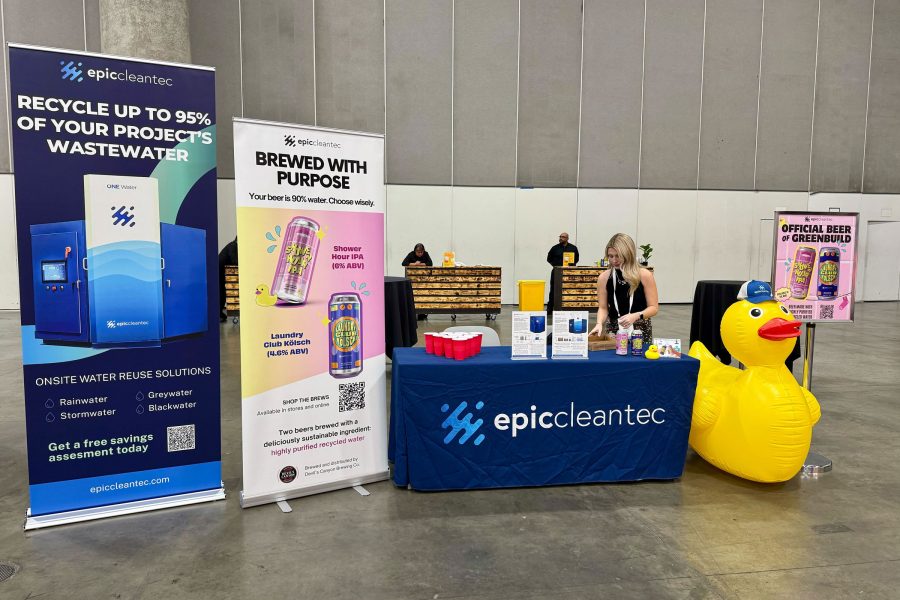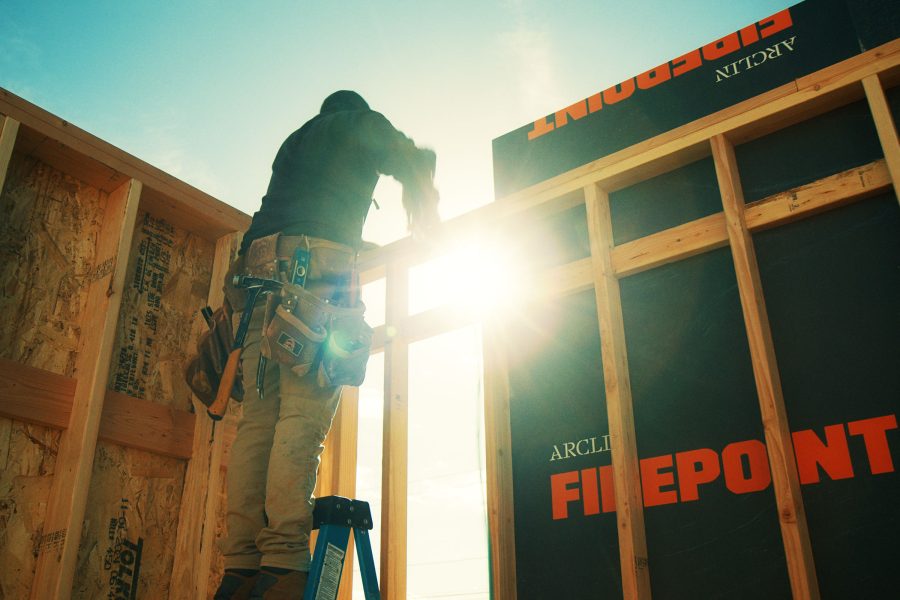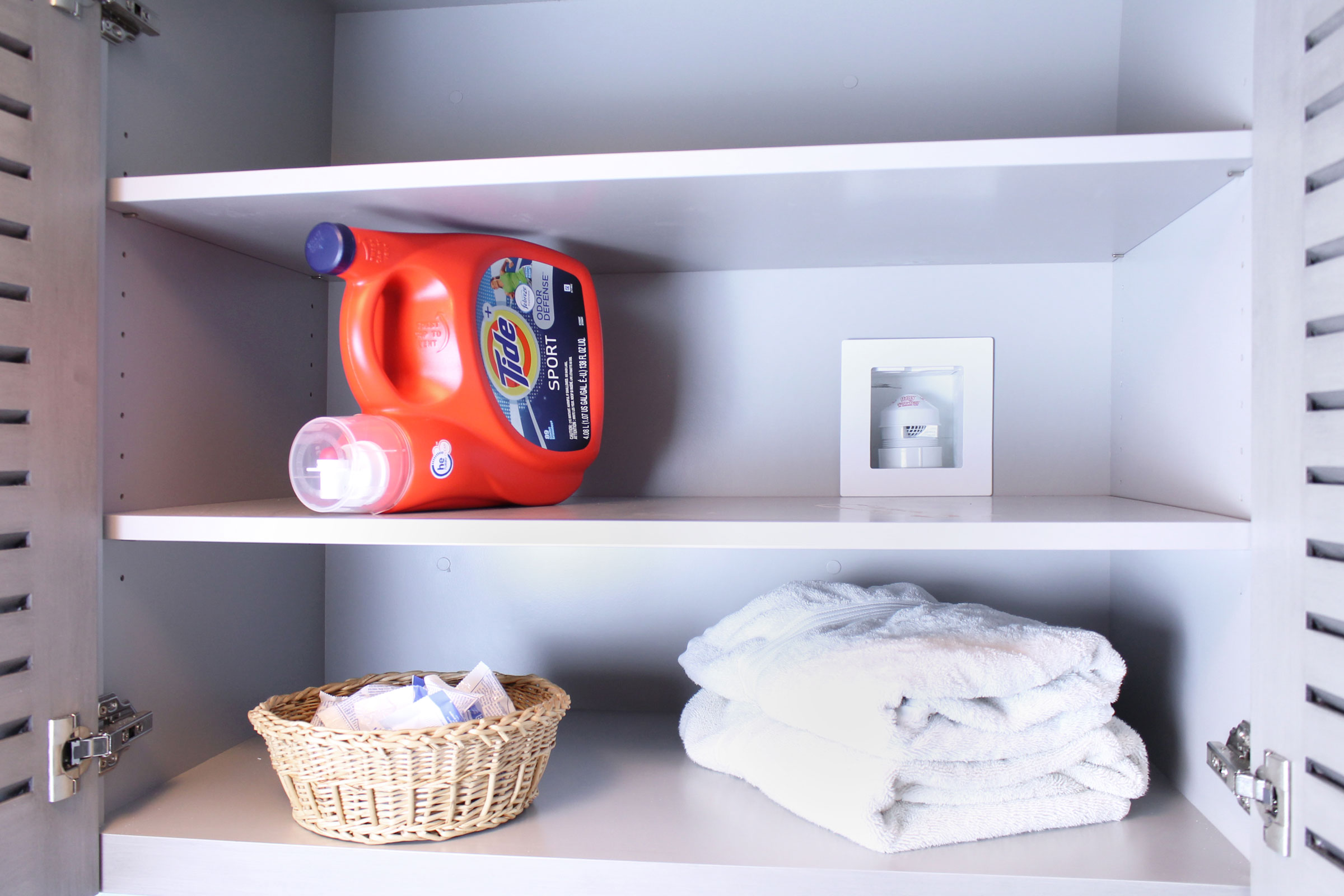Story at a glance:
- Greenbuild 2025 centered on the latest LEED requirements and evolving sustainability.
- Well-being and human-centric design were a big part of conversations at the major green building event.
Understanding LEED v5, evolving manufacturers’ sustainability initiatives, and new Environmental Product Declarations were among the hot topics at this year’s Greenbuild International Conference + Expo, which took place Nov. 4 to 7 at the Los Angeles Convention Center.
The event hosted thousands of sustainability professionals and featured a packed exhibit hall, plus more than 100 CE-accredited education sessions on topics like resilience, decarbonization, and sustainable finance strategies and climate policy.
Launched earlier in 2025, LEED v5 is the latest version of the world’s leading green building standard—offering clear steps to achieve near-zero carbon, prioritize people, and build for resilience, according to USGBC. It was a main talking point among most exhibitors at this year’s show.
These are just some of the things we learned from Greenbuild 2025.
Kingspan Light + Air and Solatube look to a smarter, brighter future.

Natural light and ventilation play a huge role in reducing operational and embodied carbon. Integrated daylighting supports both passenger well-being and sustainability goals at LAX Terminal 4 South Concourse. Photo courtesy of Los Angeles World Airports, Kingspan Light + Air
As previously mentioned, the launch of LEED v5 was on many people’s minds at this year’s Greenbuild. Kingspan Light + Air and Solatube were among the sustainable manufacturing experts discussing the launch of LEED v5 and the growing focus on human-centric building design.
“One of the most exciting changes we’re seeing under LEED v5 is the evolution of daylighting from a simple illuminance target to a human-centered design strategy,” says Neall Digert, vice president of innovation and market development at Kingspan Light + Air. “The conversation has expanded beyond light levels to include glare control, circadian effectiveness, and the measurable influence of natural daylight on occupant wellness. It’s redefining how we think about daylight in the built environment.”
Digert says there’s growing momentum around integrated daylighting and ventilation systems, smarter controls, and research-driven design frameworks that allow buildings to actively support human health.
“This is where the future of our field is headed, creating environments that work in harmony with how people live, heal, and perform, and it reflects the people-first innovation we continue to advance at Kingspan Light + Air and Solatube.”
Construction Specialties (CS) celebrates key sustainable milestones.

Acrovyn with Recycled Content reflects CS’ efforts toward sustainable manufacturing. Photo courtesy of Construction Specialties
CS’ commitment to sustainability is clear. In two years the company has reformulated its flagship wall protection product, Acrovyn, to include up to 50% post-consumer recycled content while also partnering with Mindful Materials and aligning all programs within the Common Materials Framework. CS has also published its first Red List–free Declare Label for Acrovyn, grown its list of EPDs and HPDs, and switched to 100% renewable electricity at its Pennsylvania facilities.
“Sustainability is woven into every aspect of our business—from how we power our facilities to how we design and manufacture our products,” says Anthony Peachey, Construction Specialties marketing director. “These recent achievements underscore our commitment to continuous improvement and to providing our customers with the verified, transparent information they need to design healthier, more sustainable buildings.”
The leading manufacturer of architectural building products has realized significant progress in advancing its sustainability and transparency goals, reinforcing its commitment to creating products and operations that positively impact people and the planet.
CS’ first Red List–free Declare Label, for Acrovyn Sheet – Solid Color, signals full material transparency and compliance with the International Living Future Institute’s (ILFI) rigorous criteria for healthy, nontoxic building materials.
Their updated EPDs for Acrovyn Sheet now reflect the reduced embodied carbon achieved through CS’ Acrovyn with Recycled Content initiative. This update highlights the measurable progress CS has made in lowering the environmental impact of its flagship product line.
Green Badger unveils expansion with EC3 integration and full LEED v5 support.

Photo courtesy of Green Badger
Green Badger, a top SaaS developer for managing sustainable construction, recently released its largest platform expansion to date, offering architects, engineers, and contractors a single solution for end-to-end sustainability sourcing and tracking.
The update extends Green Badger’s market-leading LEED and ESG reporting from the job site further into the design phase, integrating new embodied carbon tracking and HPD partner connections, and support for the latest LEED v5 requirements to reduce time and effort across the entire project life cycle.
Construction contractor Suffolk worked with Green Badger on complex, high-profile projects like Boston’s Parcel 12 and a major California studio renovation. With more than 70% of its portfolio targeting green requirements, Suffolk uses Green Badger’s automated platform to manage credit tracking, low-impact material selection, and construction waste reporting in real time. This approach not only saves project teams significant time—often more than 60% compared to manual methods—but also gives clients clear, accurate insights into the cost and impact of different LEED strategies from day one.
VELUX is turning increased awareness of IAQ into action in building designs.

Photo courtesy of VELUX
“VELUX has spent more than 80 years innovating solutions to improve quality of life through daylight and fresh air. At Greenbuild we’re reminded that this mission is bigger than any one company. Collaboration on research, design, and policy is essential if we want to scale healthier, more resilient buildings that serve both people and the planet,” says Emily Ercolano, regulatory and public affairs manager for North America at VELUX.
Ercolano says that while daylighting and natural ventilation are proven to boost health, performance, and energy efficiency, conversations at Greenbuild went even further, addressing impacts across the building supply chain and neighboring communities. “I’m energized by the expertise represented at the conference this year and optimistic about what we can accomplish together,” she says.
Known for its innovative daylighting and ventilation products, VELUX continues to invest in independent research that underscores how air quality and natural light directly influence human well-being and health, Ercolano says.
“Passive design strategies such as controlled cross-ventilation, operable windows, and stack effect modeling can now be paired with mechanical assist systems that respond dynamically to air quality sensors,” Ercolano says. “Our research shows that hybrid ventilation systems often outperform purely mechanical or passive approaches by maintaining superior IAQ with lower energy use, demonstrating that the next generation of healthy buildings will combine smart controls with natural airflow rather than rely solely on traditional HVAC.”
Steel Dynamics launches lower embodied-carbon steel products.

Branch Park Pavilion. Photo courtesy of Leonid Furmansky Architectural Photography, Steel Dynamics
Steel Dynamics recently announced its new lower-embodied-carbon steel product offerings, BIOEDGE and EDGE, to support customers in achieving their greenhouse gas emissions reduction and sustainability initiatives.
These products are produced exclusively with electric arc furnace (EAF) technology. The steel is also matched with Green-e Energy certified renewable energy certificates or emission-free nuclear energy certificates, significantly reducing Scope 2 emissions.
“With our EAF steelmaking, circular manufacturing model, and innovative teams, Steel Dynamics is already a global leader in the production of lower-embodied-carbon steel products,” says Mark D. Millett, chairman and CEO of Steel Dynamics. “We are excited to expand our lower-embodied-carbon steel product offerings, and we are committed to providing high-quality, innovative supply-chain solutions to support our customers’ decarbonization initiatives.”
The company anticipates interest from automotive and construction customers as well as from across the renewable energy and infrastructure sectors.
The American Cement Association shares how to implement lower-carbon concrete.

Photo courtesy of the American Cement Association
The American Cement Association (ACA)’s session at Greenbuild 2025 featured a panel discussion about using blended cements to successfully implement lower-carbon concrete. Blended cements like Type IL, IP, IT, and IS are playing a larger role in modern construction and are essential for projects with sustainability goals.
This year’s speakers shared technical information about these lower carbon cements, specification guidance, practical contractor insights, and project successes—including the use of Type IL Portland limestone cement at the Intuit Dome arena in Inglewood, California, and a Type IT slab-on-grade project in Nebraska.
Speakers included experts from Walter P Moore, Turner Construction, Heidelberg Materials, and the ACA.
ACA’s Aubrey Garinther, director of concrete design and technology, spoke on successful implementation for lower-carbon concrete. The session identified one of the key levers in the cement industry’s roadmap to carbon neutrality—the widespread adoption and use of blended cements and supplementary cementitious materials. Experts say these cements offer an upfront reduction in embodied carbon as a starting point for all concrete mixtures while retaining the opportunity for further carbon reduction using existing and new strategies.
Epic Cleantec shares how rainwater and HVAC condensate are acutely underutilized resources for buildings and cities.

Epic Cleantec was one of the many vendors at Greenbuild 2025 focused on sustainable technology. Photo courtesy of Epic Cleantec
Epic Cleantec is a water reuse technology company based in San Francisco. At Greenbuild the company unveiled its OneWater Rain System, which captures and recycles rainwater and HVAC condensate and then recycles the water onsite for reuse in a range of non-potable applications, including for irrigation, toilet flushing, cooling tower makeup, and laundry.
This technology supports critical water conservation efforts while reducing strain on municipal water recycling systems and aging infrastructure, according to Epic Cleantec. By transforming these overlooked water sources into a sustainable supply, the system helps developers and property owners reduce utility costs, achieve sustainability goals, and strengthen resilience against drought and infrastructure strain.
Engineered for flexibility, the OneWater Rain is designed to integrate seamlessly into both new construction or retrofit projects, making advanced water reuse accessible to a wider range of developments than ever before. The system’s plug-and-play modular architecture minimizes installation time and space requirements, while its sophisticated AI-enabled operating platform continuously optimizes treatment, storage, and reuse in real time for maximum efficiency and reliability.
“Water is the next frontier in sustainable buildings,” says Aaron Tartakovsky, cofounder and CEO of Epic Cleantec. “With the OneWater Rain solution, we’re giving developers and building owners a tool to capture value from every drop — turning waste into savings and compliance into opportunity.”
Arclin emphasizes the importance and urgency of fire-resistant building materials.

Photo courtesy of Arclin
Leading manufacturer Arclin shared its expertise in conversations about Firepoint, saying Firepoint panels combine advanced technology with superior performance, offering a product that beyond code requirements while eliminating extra materials and saving money, labor, and time.
Firepoint slows the spread of flames, providing up to 53% more fire resistance than code (per ASTM E-119 in a third-party accredited lab), delivering unparalleled protection, according to Arclin.
The fire-rated wall assemblies have demonstrated the ability to withstand fire for up to 90 minutes on 60-minute wall assemblies. Firepoint is also noted for its light weight, efficiency, and weather resistance, allowing for up to six months of weather exposure during installation without compromising performance.


